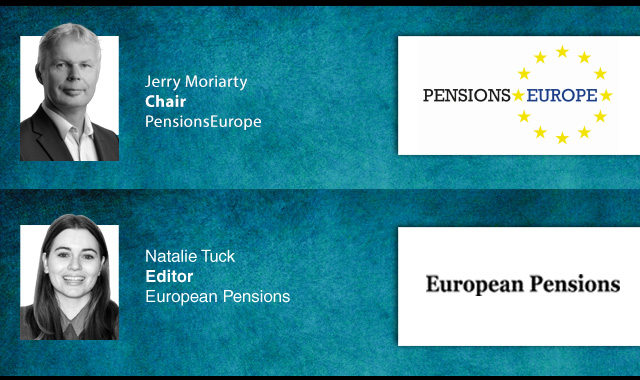Target date funds are a firmly established part of the DC landscape in the US and are growing in popularity in the UK. The simplicity of the concept is certainly compelling – pick a date to retire, buy the appropriate fund and then sit back. Your manager then provides exposure to return-seeking assets, such as equities, in the early years when risk capacity is higher, and becomes increasingly conservative as time progresses with exposure switched progressively towards capital-preservation assets, such as bonds and cash.
Target date funds (TDFs) are designed to provide a simple and convenient way to manage member assets up to retirement. This area has previously been dominated by lifestyle options. The key advantage that TDFs offer over a lifestyle profile is an element of discretion: instead of automatically swapping equities for bonds on set dates, a TDF is managed by an investment team, allowing them to make asset allocation changes at opportune times. The target date concept is undoubtedly attractive, but there are drawbacks to this approach.
The proliferation problem
Providing a comprehensive range of TDFs, for example, means creating a significant number of funds. If we assume that any DC scheme has school leavers as well as those about to retire, a scheme would have a range of retirement dates from 2014 to 2063. This means 49 different funds. Naturally, this can be reduced using three or even five-year bands. This reduces the number of variants but would also mean members losing some of the ‘targeted’ exposure that is one of the key reasons to use such funds. This is not an insurmountable problem, but does mean that trustees need to be sure that the provider has the appropriate infrastructure in place alongside the required investment expertise.
One size fits all
Different schemes will have different views on risk, particularly during the growth phase. Using a TDF typically means accepting the provider’s idea of a suitable risk profile. We believe that schemes will have varying needs. For instance, schemes may wish to offer a low-risk ‘foundation stage’ investment strategy for their younger employees.
All-in-one may not be best for all
To provide the best retirement income for the members we believe that best results need to be obtained from both the growth and de-risking phases. A traditional TDF will aim to provide both of these components within a single structure. The convenience this offers could ultimately mean compromising on the quality of each element.
We believe that there is a way to keep the benefits of TDFs, whilst still delivering investment flexibility, and therefore advocate addressing growth and de-risking assets separately to maximise the potential benefits of each:
Growth solutions: The aim is to maximise the returns at an acceptable level of risk, whether by buying an off-the-shelf diversified growth fund, or other multi-asset funds, or creating a more bespoke solution with a client-specific blend designed with help from a consultant.
Dynamic de-risking funds: These funds are TDFs that are used for members’ investments in the last 10 years before retirement only. They are in effect ‘mini’ TDFs, with a glidepath that will move members’ assets from the growth solution into a suitable pre-retirement investment mix that aims to closely match annuity prices.
We think that this disaggregation of strategies combines the simplicity of TDFs with greater flexibility. A scheme can give the manager of its de-risking funds the discretion to alter the pace of the de-risking process, thus still giving the member a managed, rather than automatic, glidepath to a specific retirement year. We believe that asking members to choose a retirement date when they are much closer to retirement is preferable, as by this point in their career they are more likely to know whether the selected date is realistic or not.
The debate around TDFs can easily become a ‘good or bad’ debate. This misses the point. The principles behind TDFs are, in our view, good. But we expect target date solutions to evolve towards a model that will allow for even better outcomes.
Emma Douglas is Head of DC Solutions, Legal & General Investment Management
Latest News
-
Pension gap and VfM dominate Europe’s consumer risk landscape
-
Europe’s pension associations welcome IORP stress test results
-
AAE identifies ‘cross-cutting challenges’ of European pension tracking service
-
I&P Denmark hails govt’s 82% climate target as ‘strong signal to the world’
-
News in brief: 19 December
-
European insurtech firm Lumera acquires Acuity for undisclosed amount
Podcast: Stepping up to the challenge

In the latest European Pensions podcast, Natalie Tuck talks to PensionsEurope chair, Jerry Moriarty, about his new role and the European pension policy agenda
Podcast: The benefits of private equity in pension fund portfolios

The outbreak of the Covid-19 pandemic, in which stock markets have seen increased volatility, combined with global low interest rates has led to alternative asset classes rising in popularity. Private equity is one of the top runners in this category, and for good reason.
In this podcast, Munich Private Equity Partners Managing Director, Christopher Bär, chats to European Pensions Editor, Natalie Tuck, about the benefits private equity investments can bring to pension fund portfolios and the best approach to take.
In this podcast, Munich Private Equity Partners Managing Director, Christopher Bär, chats to European Pensions Editor, Natalie Tuck, about the benefits private equity investments can bring to pension fund portfolios and the best approach to take.
Mitigating risk
BNP Paribas Asset Management’s head of pension solutions, Julien Halfon, discusses equity hedging with Laura Blows
© 2019 Perspective Publishing Privacy & Cookies







Recent Stories